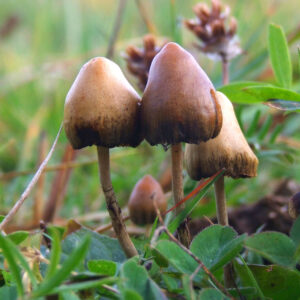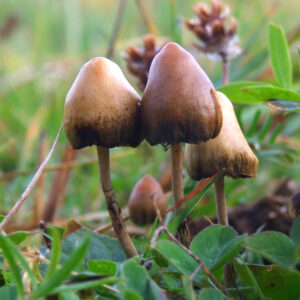 Welcome to this blog post about the discovery of compounds in psychedelic mushrooms! Psychedelic mushrooms have been used in various cultures around the world for centuries, but what exactly are they made of? In this blog post, we will explore the main compounds that have been discovered in psychedelic mushrooms, as well as their potential medicinal and therapeutic benefits.
Welcome to this blog post about the discovery of compounds in psychedelic mushrooms! Psychedelic mushrooms have been used in various cultures around the world for centuries, but what exactly are they made of? In this blog post, we will explore the main compounds that have been discovered in psychedelic mushrooms, as well as their potential medicinal and therapeutic benefits.
- Psilocybin
Psilocybin is a compound found in many psychedelic mushrooms. It is a naturally occurring psychedelic compound that acts on the serotonin receptors in the brain, producing changes in perception, mood, and cognitive processes. It has been studied for its potential therapeutic benefits and is being explored as a potential treatment for mental health issues such as depression and anxiety.
- Psilocin
Psilocin is a naturally occurring psychedelic compound found in certain mushrooms. It is thought to produce a range of psychedelic effects, including altered thinking, visual and auditory distortions, and an altered sense of time. It is believed to act on serotonin receptors in the brain, resulting in these effects.
- Baeocystin
Baeocystin is a psychedelic compound found in certain species of mushrooms. It is an analog of psilocybin, the main psychoactive compound in psychedelic mushrooms. It has similar effects to psilocybin, including altered states of consciousness, visual and auditory hallucinations, and spiritual experiences.
- Norbaeocystin
Norbaeocystin is another compound found in psychedelic mushrooms. It is an alkaloid that contributes to the psychoactive effects experienced when consuming the mushrooms. It is known to act as a partial agonist of the serotonin 5-HT2A receptor, which is thought to be responsible for the hallucinogenic properties of the mushroom.
- Aeruginascin
Aeruginascin is a chemical compound found in certain species of psychedelic mushrooms. It produces a powerful hallucinogenic effect when consumed, with users reporting altered perception, vivid colors, an intense feeling of euphoria, and visual and auditory distortions.
- Phenethylamine
Psychedelic mushrooms contain a compound called phenethylamine, which is believed to be responsible for the hallucinogenic effects of the mushrooms. This compound is believed to act on the brain’s serotonin receptors, affecting the release and uptake of neurotransmitters and providing a distinct altered state of consciousness.
- Serotonin
Next is the serotonin compound in psychedelic mushrooms, which triggers a release of the neurotransmitter serotonin, which acts on the brain to produce a range of altered states of consciousness and a sense of euphoria. This can lead to an altered perception of reality, a heightened sense of creativity, and a range of spiritual experiences.
- Ergoline alkaloids
Ergoline alkaloids are a group of compounds found in some psychedelic mushrooms. They are responsible for the hallucinogenic effects of these mushrooms and work by acting on the serotonin receptors in the brain to produce altered states of consciousness.
- Harmine
Harmine is another psychedelic compound found in certain species. It is an alkaloid that acts as a monoamine oxidase inhibitor, allowing the mushroom’s other psychoactive compounds, such as psilocybin, to be more easily absorbed by the body. It has been used for centuries in religious and spiritual rituals for its mind-altering effects.
- Harmaline
Harmaline is a naturally occurring compound found in some psychedelic mushrooms. It can produce psychoactive effects, inducing altered states of consciousness. It has been used in traditional spiritual and healing ceremonies, and modern scientific research suggests it may have potential therapeutic applications.



